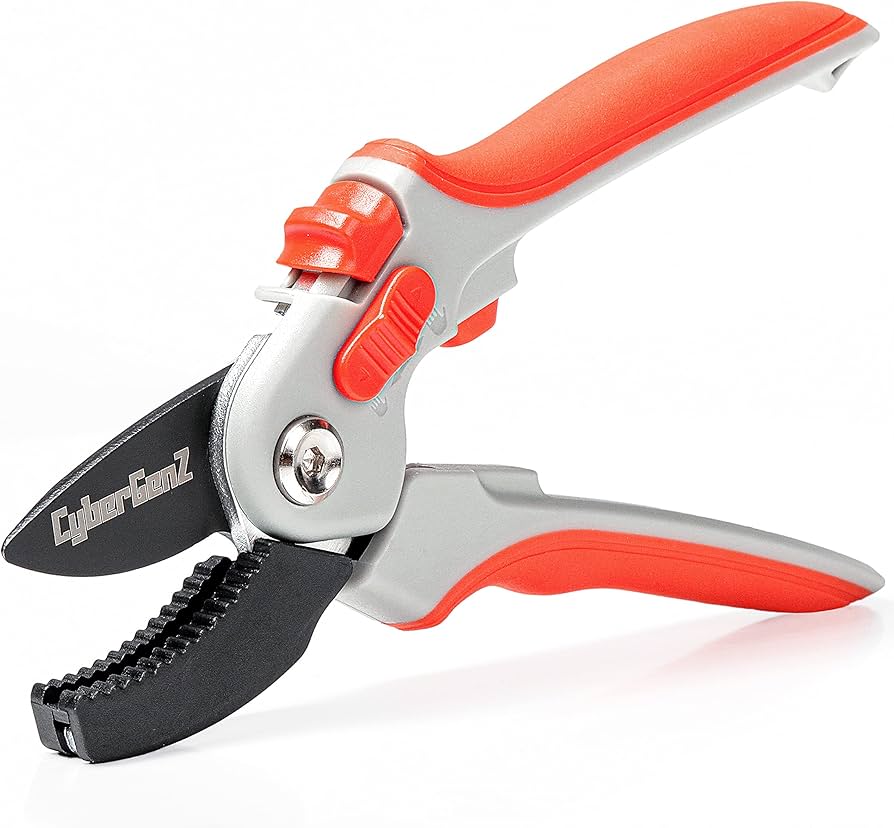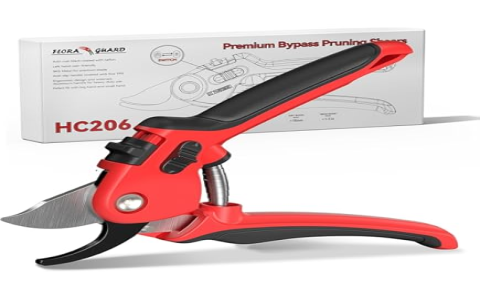Alright, so my garden was gettin’ a bit out of hand, especially with some of the older, woodier stuff. For years, I’d just been using the same old bypass pruners for everything, you know, the ones that slice like scissors. But they were really struggling with thicker, dead branches. It was a real pain, felt like I was gonna break the tool or my wrist.
Time for a Change
I started lookin’ around, asking a few folks, and someone mentioned anvil pruning shears. Sounded heavy-duty. The idea is simple: one sharp blade closes down onto a flat, solid surface, the “anvil.” Kinda like a knife on a cutting board, ‘cept you’re squeezing it shut. Decided to give ’em a whirl, figured anything had to be better than the fight I was currently having.

So, I got myself a pair. Nothin’ too fancy, just a solid-looking set. First impression? They felt sturdy, a bit heavier than my bypass ones. The action felt different too, more direct, less finesse, if you catch my drift.
Putting Them to the Test
The first job was an old rose bush that was more deadwood than alive. Real tough, gnarled canes. This is where I really wanted to see what these anvil pruners could do.
- The Approach: I picked a gnarly, thick, dead cane, probably about half an inch thick. Slipped the branch between the blade and the anvil.
- The Squeeze: Gave the handles a good firm squeeze. Didn’t have to fight it like I used to.
- The Result: Crack! It went right through. The cut wasn’t as clean or smooth as a bypass pruner would leave on a green stem, mind you. It kinda crushed its way through. But for deadwood, who cares, right? The main thing was it cut it, and with a lot less effort on my part.
I spent a good hour or so tackling all sorts of dead branches around the yard. Some thicker stuff on an old lilac, some dried out fruit tree suckers. The anvil pruners just chomped through them. It was a lot quicker than before. I wasn’t wincing every time I made a cut on something tough.
What I Reckon Now
So, here’s the deal with these anvil pruning shears, from my experience:
The Good Stuff:
- They are absolute beasts on hard, dead wood. Seriously, that’s their superpower.
- Less effort needed for those tough cuts. My hands weren’t aching nearly as much.
- Seems like the blade might stay sharp longer because it’s not twisting against another blade, just hitting that anvil. Time will tell on that one.
Things to Keep in Mind:
- They are not great for soft, green, living stems. Because they crush down on that anvil, they tend to damage the softer plant tissue around the cut. For live, delicate pruning, I’m definitely sticking with my bypass pruners. Those make a clean slice, which is better for the plant’s health when it’s living tissue.
- You gotta make sure the branch is positioned right on the anvil. If it slips, you might not get a good cut.
So, in the end, it’s not about one being better than the other all the time. It’s about having the right tool for the job. These anvil pruners have definitely earned their spot in my shed. They’re my go-to for clearing out the tough, dead stuff. For everything else, the bypass pruners still rule. It’s made my big clean-up jobs a whole lot easier, that’s for sure. No more wrestling matches with stubborn branches. Just a good, solid snap.






















